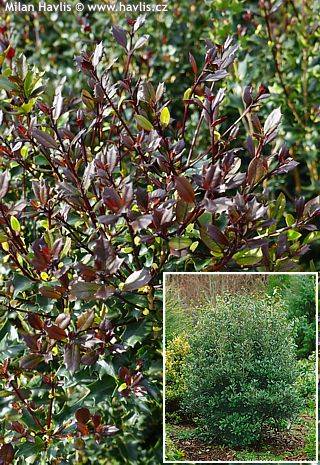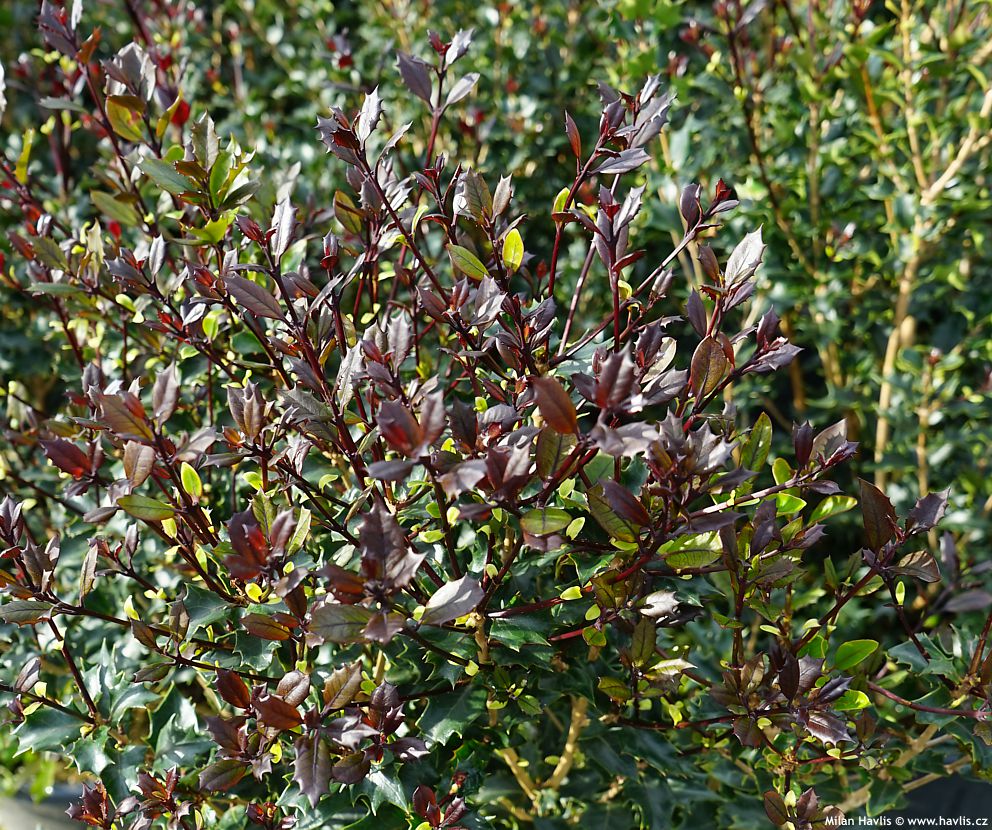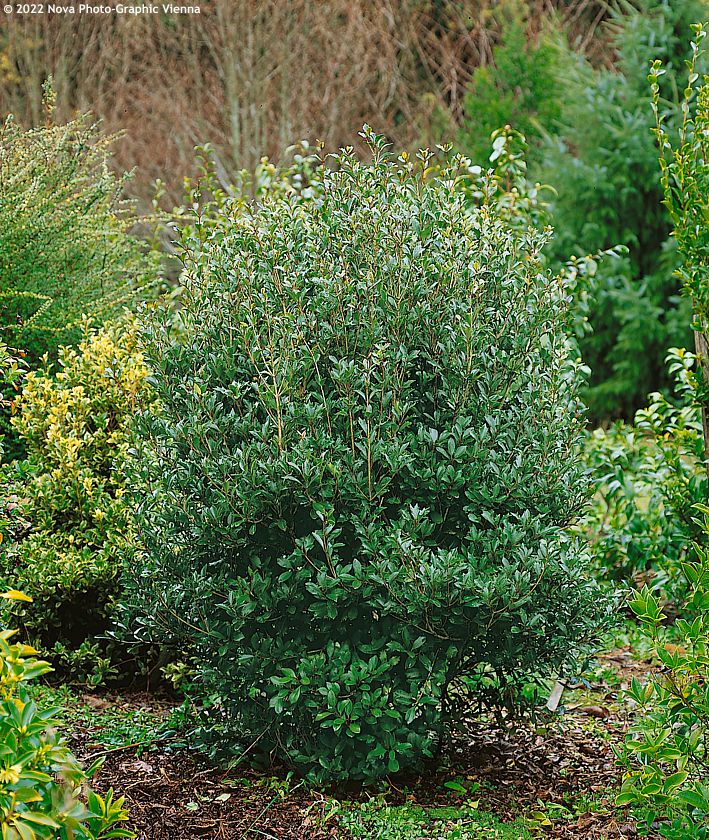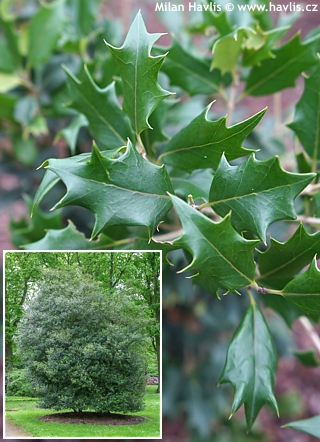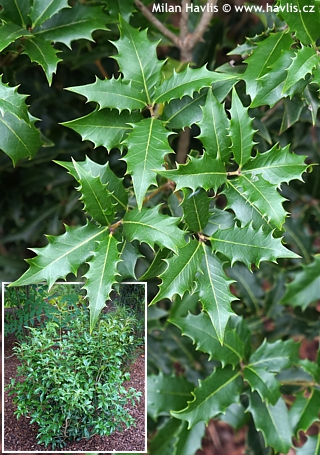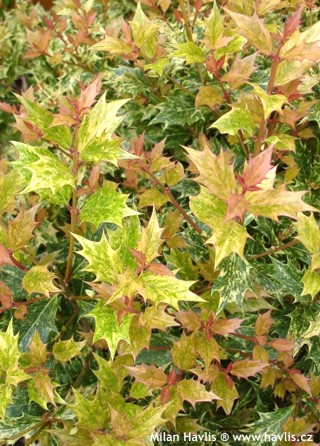Osmanthus heterophyllus 'PURPUREUS' holly osmanthus, false holly
size/type
medium-sized shrub,taller shrub
usual height
2-3m
usual width
1-2m
leaves
evergreen broadleaf
colour of leaves
flowers
less showy but noticeable
colour of flowers
blooming time
October-November
location
full to partial sun
soil type
acidic (peaty) to neutral
soil moisture requirements
evenly moist but well-drained
USDA zone (lowest)
7 (down to -23°C)
winter protection
for zone 5+6

for zone 7

categorized
Osmanthus
Osmanthus is a genus of only about 15-20 evergreen species and varieties, and a genus which I fell in love with the first time I saw a few plants of. Their leathery and sometimes spiny leaves resemble hollies but osmanthus plants have something extra which gave them their name derived from Greek: osme = fragrance and anthos = flower. Osmanthus has tiny but highly fragrant flowers. I was an amateur when I bought the first plants and I had no idea that in all encyclopedias they were rated too tender for our C.E. climate. And since I never knew I put them to my garden. And after some 15 years of growing I can assure you that all of them not only survived even the worst winter of 2006/2007, they thrive and some of them are taller than me and I am very close to 2m. Including the most tender one o.fragrans. I keep on trialling more species and varieties because I noticed that they have some genetic predisposition for extreme drought tolerance in summer and some are even happy with dry soil in winter. And with current lack of precipitation we will need more of drought tolerant plants.Description of the plant:
Holly osmanthus or false holly is a taxon of evergreen shrubs and small trees native to East Asia, southern Japan, and Taiwan. Purpureus is a popular variety producing evergreen, leathery, and highly glossy leaves which emerge deep maroon, almost black, and mature to a very dark green shade with maroon hues. Leaves of young plants are margined with spines and resemble hollies but can easily be distinguished: holly leaves are alternate while osmanthus leaves are opposite. The presence and quantity of leaf spines as well as the foliage size may vary with each clone or mother plant from which cuttings were taken, and significantly decreases with age: mature plants have almost entire, camellia-like foliage. False holly is known for very fragrant flowers which are tiny, sweetly scented, snow-white, and appear in autumn. If pollinated by a male plant they are followed by small, purplish black, non-toxic berries, but that happens rarely.
Purpurea false holly is also popular for its slower growth and more compact habit. It naturally forms upright growing shrubs which grow 20-25 cm per year and become oval with age. The branching is dense and plant size and shape can be easily maintained and shaped by pruning. Spring pruning enhances branching, summer trimming is great for shaping. The twigs and bark are light gray and smooth.
Spine-leaved osmanthus has long been used as a natural barrier against wild animals and cattle. Another significant advantage is that they are long-lived shrubs or trees, and we are not talking about decades but hundreds of years. There are records of specimens whose age was estimated to 950 or more years. In other words, if located in an ideal spot it can be a plant that will be passed on by one generation to another. It looks great as an attractive evergreen specimen shrub or small tree and does a good job as a hedge, too.
Grow osmanthus in moist but well-drained, humus rich, preferably acidic soil. Provide plenty of mulch for winter to protect the roots from fast freezing. It loves full sun but in colder regions find it a location sheltered from late winter and early spring sunlight but with plenty of light during the growing season. Use only plants with mature wood in zone 6 and transplant it no later than late summer in order to avoid frost damage after the first winter. It is trialled hardy to -24 °C (USDA zone 6). It will withstand a few degrees lower with some wood damage but regenerates readily after spring pruning. It does not suffer from diseases, but vine weevil can be a problem.
Last update 17-01-2023
QUICK PRICE OVERVIEW
CURRENTLY SOLD OUT
WANT TO TRY A SIMILAR PLANT?












